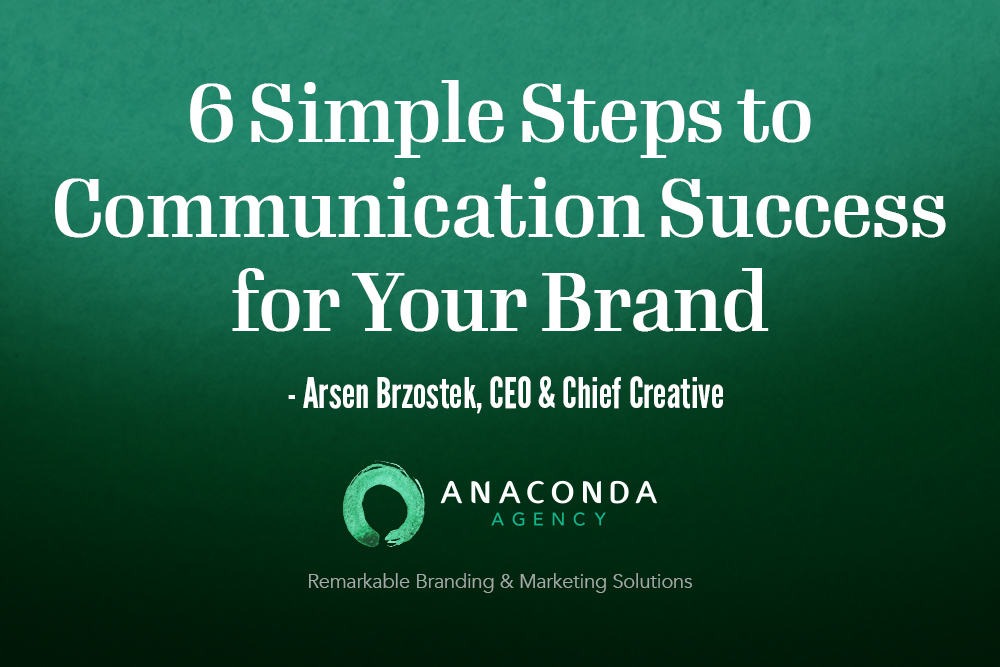
Communication shapes our daily lives. With today’s marketplace ever on the hunt for value, the brands that best communicate their strategies—and deliver on them—consistently win. What do those brands that show wins year after year have in common?
Impeccable communication
Consider companies that have mastered the art of self-expression, like Apple, Nike, and Google. They have elevated clear and accurate communication to the level of art form. Why do these companies take their conversations so seriously? Because they know it brings value to their customers.
Through analytics, top brands observe what each of their marketing interaction points reveals, then create and disseminate respective communications accordingly. Those marketing messages are dispersed via the appropriate channels within each organization to service with excellence throughout the sale process resulting in continued brand loyalty.
The most notable brands comprehend that intra-organizational communication is elemental to success. Each missed call, unanswered email, or delayed instant message, to some degree, degrades brand equity. Communications training thus pays powerful dividends once team members begin to interact with customers.
Top brand cultures have teams that hold a firm grasp on impeccable communication and know how to react with speed and agility to produce the most value for their customers and clients. The combination of external and internal communication helps to build confidence, create unity, and cultivate brand loyalists who influence others to be part of the culture.
6 simple steps to communication success
- Create intent
- Communicate intent via clear and accurate message
- Direct message to specific recipient(s)
- Watch for and observe reaction
- Respond, confirming comprehension
- Confirm communication completion
Creating intent can be simple. For example:
I will…
- set up a meeting via email with a select contact
- call this client to tell them about a unique opportunity suddenly available
- see that client today and inform them of the successful campaign results
Communicating that intent clearly and accurately can become challenging if overthought and overwrought. Most executives and business professionals have their time scheduled tightly, so make it clear and concise. Deliver intent at a crisp pace, with sharp clarity and simple messaging. Above all, stay focused on the goal of the intent, and resist the temptation to deviate or become sidetracked.
To promote swift comprehension, break the message into “thought packets” of one to three lines. For example, in email: an introduction including a brief greeting, followed by your clearly stated intent, then a closing with a call to action and signature. A message can have as many thought packets as necessary but exclude long paragraphs, rambling monologue, and adding unnecessary extra words. State the message by sticking to only facts and solutions.
Leaving a message for a specific recipient via email (or voicemail if it’s the only available option) takes the communication beyond your control—once the message is delivered, all you can do is await a reply. The recipient will respond either quickly or slowly. Both email and voice communications should generally get a response within 24 hours. Texts and instant messages should be handled within three hours of receipt or less (barring emergencies). Assuming the recipient is also fond of excellent communication, then they will respond within a reasonable time frame.
If the call connects, or if the meeting is face to face, deliver the message with focused intent; then, listen to and/or observe the reaction. We all possess the necessary tools to pick up on body language and audible cues which enable us to connect on a deeper level with the words being spoken—and most importantly, to actively listen with and for intent.
Concentrating and internalizing the words so they paint a clear picture in the mind enables the formulation of an accurate response. Providing a timely and accurate response completes the interaction and ties up those annoying loose ends that generate needless stress. Ensure that all “thought packets” within a given communication are adequately addressed; until the interaction is completed, patiently but persistently follow up on any important thoughts that attempt to flutter away.
The most common lapse in the process is the final confirmation and closure to call the communication complete. The final, step is to acknowledge the recipient and the time they provided. This can be done with a simple “Thanks, I appreciate your time” or “Thank you”. This last gesture confirms that communication is complete. Success! Everyone who was engaged in the conversation has certainty that it is complete. No dangling loose ends silently consuming mental energy.
Follow these 6 simple steps for communication success, and practice by applying them to every possible interaction. As you get in the habit of keeping your messaging simple and following through to completed closure, your communication will become more clear and accurate. Those with whom you interact will appreciate—and may emulate—your efficiency in communication, which will enhance their own workflow. Everybody wins!
Communicating with clarity, precision, and a caring nature brings value to everyone involved. I challenge everyone to be a better communicator by applying these six simple steps to communication success to each of your daily interactions. It ultimately makes a positive difference in your business as well as personal life.
